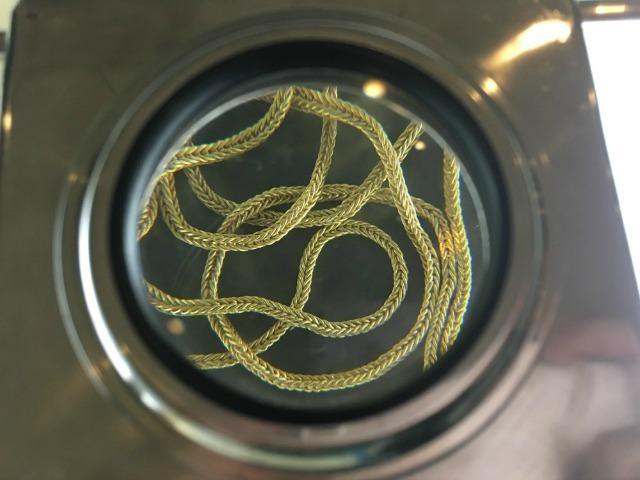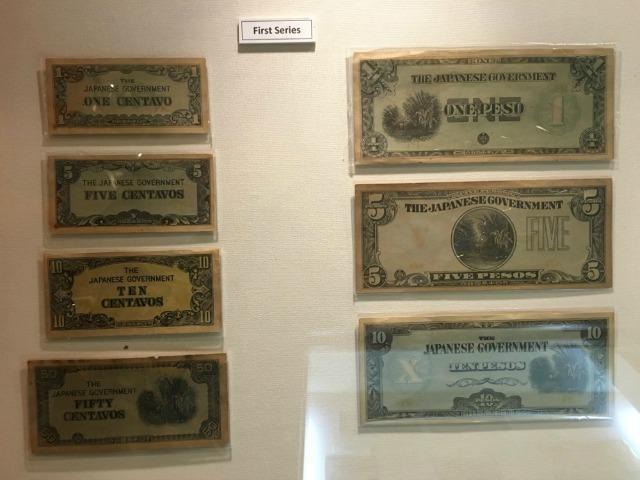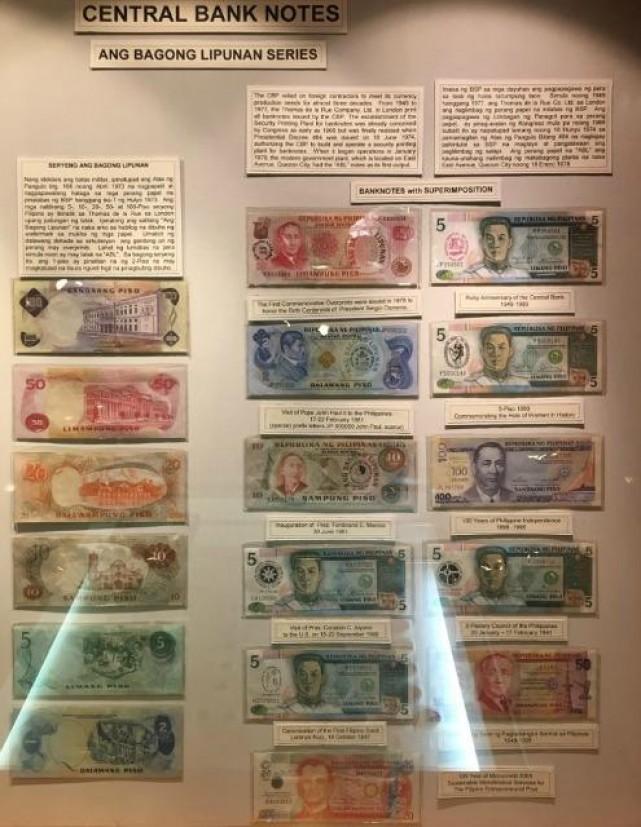Tracing PHL’s story of money at the Bangko Sentral’s Money Museum
I could faintly remember the days when as a kid, my mom would give me a blue two-peso or green five-peso bill as daily allowance during my elementary days. It was also during primary school that stories and tales of “Mickey Mouse” money being used during the Japanese occupancy were told by our Hekasi or Sibika (history/culture) teachers.
As a young person, it was really hard to visualize the Philippines’ history with currency and money without actually seeing the coins, bills, and artifacts that show how far the story of money has come—from the barter system used during the pre-Spanish colonial period to silver coins introduced during the three hundred years of Spanish occupation to the present New Generation Series that we use today.
As an everyday necessity to pay for transportation, meals, and other purchases, the study of money, numismatics, does not automatically get special attention from the everyday Juan. But once in a while, it is nice to reminisce and recollect what currency and money looked like decades, and even centuries ago.
There’s only one such place in the country where one can find a comprehensive and impressive collection of currency, coins, tokens, paper money, and related objects: the Money Museum of the Bangko Sentral ng Pilipinas (BSP).
Like entering Fort Knox
Entrance to the BSP complex and museum is through the F.B. Harrison Street (across Harrison Plaza) gate. After filling up a visitor’s entry form, surrender a government-issued ID for a visitor’s pass. Once you scan the visitor’s pass at the turnstiles, the museum is only a few meters away from the visitors' center.
The full-body scanner, X-ray machine, bright-lit room, and strict security protocols will make visitors feel like they are entering the United States’ Fort Knox. Entering the nation’s main bank, it would be advisable for museum visitors to bring only essential items and nothing else.
There are six galleries inside the 42-year old Money Museum, each dedicated to a particular period in Philippine history: pre-Spanish, Spanish, Revolutionary, American/Japanese, the Republic, and a special exhibition called “Layon: Money as Vision.”
Barter system
The pre-Spanish (pre-Hispanic) gallery contains mostly gold and other artifacts used by early Filipinos during the 9th to 13th centuries. Seafaring Filipinos used barter system as a means of trading: exchanging fish and livestock for commodities such as rice, salt, fruits, and vegetables.

The Chinese traded items like jade, porcelain, silk, and metalware for Filipino products like gold, pearls, beeswax, medicinal plants, and tropical hardwood. Other interesting forms of payment or currency in the pre-Hispanic gallery include a miniature cannon used in Borneo for barter and as wedding gift, and pressed tea bricks used by the Chinese for trade.
Most artifacts in the museum are stored in lighted, waist-high metal boxes with glass walls. Mounted magnifying lenses are provided for easier viewing. There are adequate explanations in English and Filipino to give each piece’s history and importance.
Spanish regulation of currency
The adjacent gallery features the earliest coins in gold, silver, and copper brought by the Spanish to the Philippines. The first coin: toston or four reales silver coin, was introduced by Ferdinand Magellan in 1521 and is one of the prized possessions of the Money Museum.
Details pertaining to the first minting plant in the country, Casa de la Modeda de Manila, as well as the nation’s first commercial bank, El Baco Español Filipino de Isabel II, known today as Bank of the Philippine Islands, give visitors a glimpse of how rich and deep money and currency are intertwined to our history.
As the Philippines declared independence from Spain in 1898, the nation’s first president, Gen. Emilio Aguinaldo, asked the Malolos Arsenal to produce the country’s own currencies: two-centavo copper coins, and banknotes with 1, 2, 5, 10, 20, 25, 50, and 100 peso denominations. To prevent counterfeiting, the banknotes were signed individually by three influential members of the Malolos Congress: Pedro Paterno, Telesforo Chuidian, and Mariano Limjap.
Guerilla notes and Mickey Mouse money
The issuance of coins and paper money by the First Republic of the Philippines solidified its status as an independent nation with its own sovereign authority. Like the country’s independence, the use of the Philippines’ first coins and paper money were short-lived. It eventually gave way to US-Philippine notes (American period), and Japanese Invasion Money and guerilla promissory notes issued by different provinces during World War II.

Despite the funny-sounding name, the Japanese Mickey Mouse money actually do look like appropriate money. The first series (1942), in one, five, ten, fifty-centavo, and one, five, and ten-peso bills look similar to the current design of the US bills. The 1943 series included a 100 peso bill featuring the Rizal Monument, and by 1944, there were also 500 and 1000 peso bills circulating due to inflation.
With WWII ending in 1946, the Philippines established the Central Bank of the Philippines in 1949 after President Manuel A. Roxas instructed his Finance Secretary Miguel Cuaderno, Sr. to draw up a charter for a central bank. Cuaderno eventually became the first governor of the Central Bank, serving as its highest official until December 31, 1960.
Despite having its own series of coins and bills since the 1950’s with the English series (1958-1966) and the Pilipino series (1967-1974), it wasn’t until 1978 that the Philippines began to print its own set of currencies.

The Security Plant Complex (SPC) in Quezon City started printing and minting the Ang Bagong Lipunan series from 1975-1982, the Flora and Fauna series coins from 1983-1990, the New Design Series 1985-1991, BSP series from 1995-2010, and finally today’s New Generation Currency (NGC). Several commemorative bills in the Republic gallery like the 8.5” x 14” P100,000 Centennial Commemorative Note and P2000 bill are sure crowd favorites.
Aside from money and currency artifacts, there are also a number of paintings, busts of current BSP governor Amando Tetangco, Jr. and past BSP governors, and a gallery dedicated to the design of money: “Layon: Money as Vision” inside the Money Museum. —KG, GMA News
Museo ng Bangko Sentral ng Pilipinas is open on Mondays to Fridays, 9 a.m. to 12 noon and 1 to 4 p.m.



